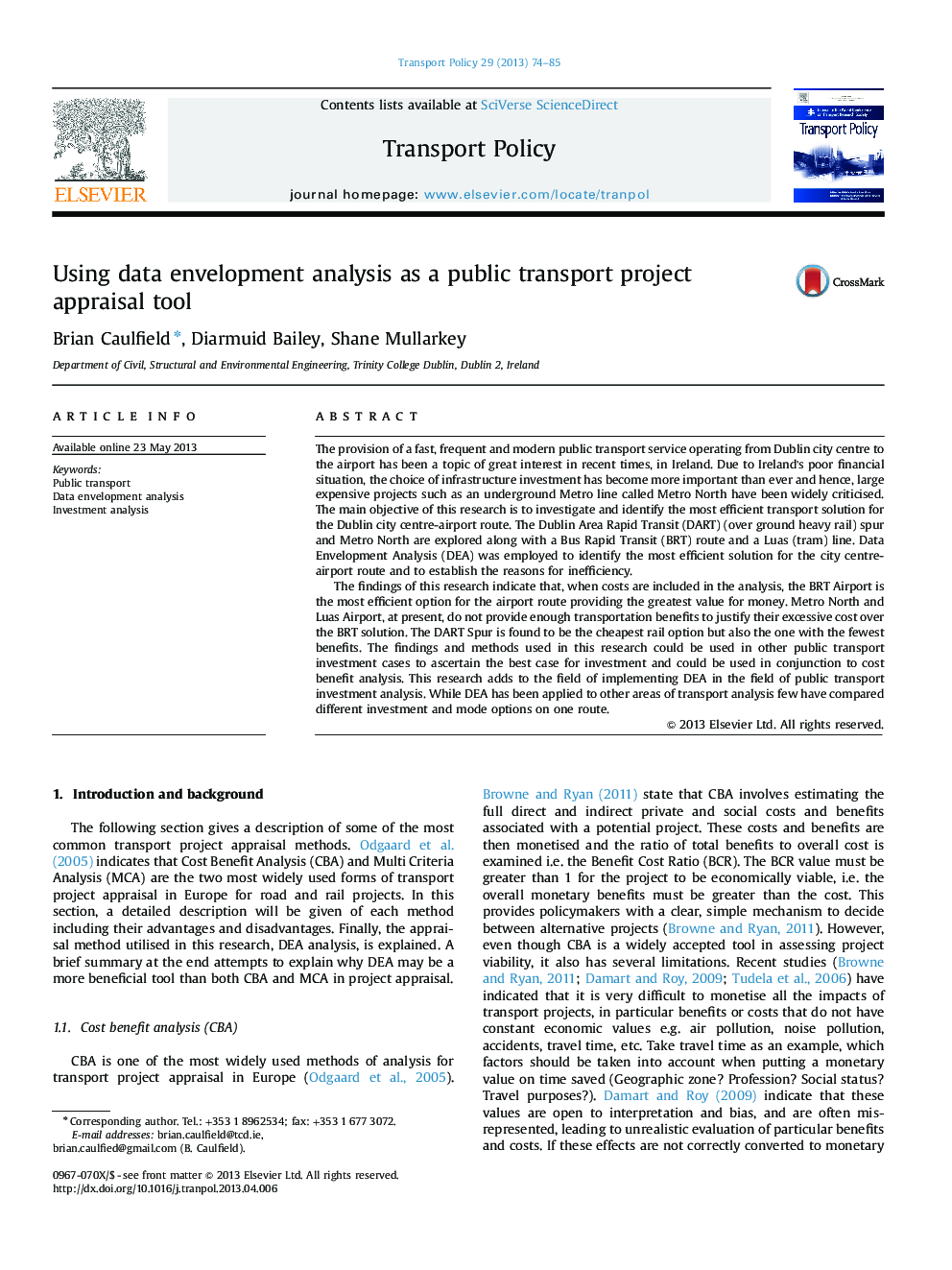| Article ID | Journal | Published Year | Pages | File Type |
|---|---|---|---|---|
| 1064941 | Transport Policy | 2013 | 12 Pages |
•The paper uses data envelopment analysis as project investment appraisal tool.•The data envelopment analysis approach is compared to traditional approaches like cost benefit analysis.•The paper compares several public transport investment options for investment in Dublin.
The provision of a fast, frequent and modern public transport service operating from Dublin city centre to the airport has been a topic of great interest in recent times, in Ireland. Due to Ireland's poor financial situation, the choice of infrastructure investment has become more important than ever and hence, large expensive projects such as an underground Metro line called Metro North have been widely criticised. The main objective of this research is to investigate and identify the most efficient transport solution for the Dublin city centre-airport route. The Dublin Area Rapid Transit (DART) (over ground heavy rail) spur and Metro North are explored along with a Bus Rapid Transit (BRT) route and a Luas (tram) line. Data Envelopment Analysis (DEA) was employed to identify the most efficient solution for the city centre-airport route and to establish the reasons for inefficiency.The findings of this research indicate that, when costs are included in the analysis, the BRT Airport is the most efficient option for the airport route providing the greatest value for money. Metro North and Luas Airport, at present, do not provide enough transportation benefits to justify their excessive cost over the BRT solution. The DART Spur is found to be the cheapest rail option but also the one with the fewest benefits. The findings and methods used in this research could be used in other public transport investment cases to ascertain the best case for investment and could be used in conjunction to cost benefit analysis. This research adds to the field of implementing DEA in the field of public transport investment analysis. While DEA has been applied to other areas of transport analysis few have compared different investment and mode options on one route.
